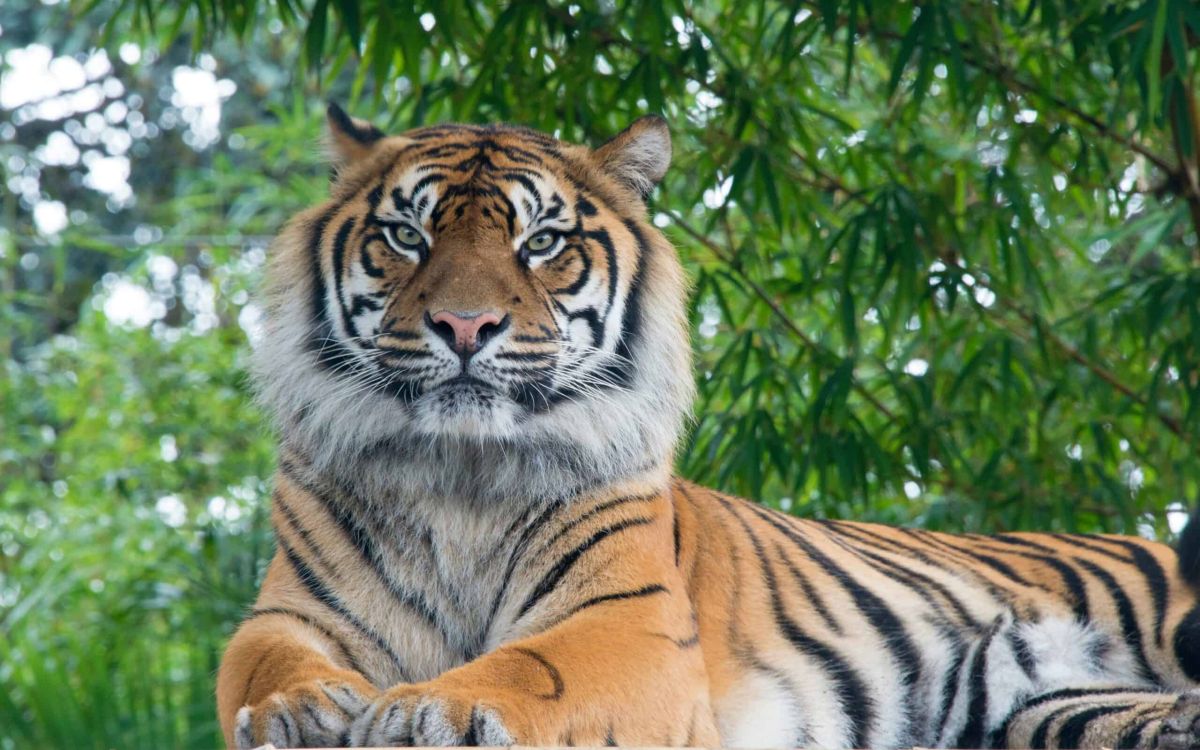The Majestic Tiger: A Look into the World of This Endangered Apex Predator

Tigers, known scientifically as Panthera tigris, are one of the planet’s most iconic and stunning mammals. Their striking stripes and powerful physique make them a symbol of strength and grace in the animal kingdom. However, tigers are more than just beautiful creatures; they play a crucial role in maintaining the ecological balance of their habitats. This blog explores the incredible world of tigers, their significance, conservation challenges, and what we can do to help protect these magnificent animals.
The Social Life and Habits of Tigers
Tigers are solitary animals, unlike many other big cats that form prides or groups. Each tiger has its own territory that it marks and defends against others. These territories can span several hundred square kilometers, depending on the availability of prey and habitat. Tigers are primarily nocturnal hunters and tend to be most active during the night. Their diet mainly consists of large prey such as deer, wild boar, and sometimes even water buffalo.
One remarkable feature of tigers is their ability to swim. Unlike most cats, tigers enjoy water and often use it to cool off in hot climates or to hunt aquatic animals. Their impressive swimming skills set them apart from other big cats, allowing them to thrive in diverse environments—from tropical forests to mangrove swamps.
The Importance of Tigers in Ecosystems
As apex predators, tigers play an essential role in their ecosystems. They help control the populations of herbivores, which, if left unchecked, could lead to overgrazing and depletion of vegetation. This, in turn, affects the entire ecosystem, including other species that share the habitat. By maintaining a healthy balance, tigers contribute to the overall health of their environment, promoting biodiversity and resilience in ecosystems.
Conservation Status and Threats
Sadly, tigers are classified as endangered, with populations continuing to decline due to a variety of factors. Habitat loss is one of the biggest threats they face, as forests are cleared for agriculture, urbanization, and logging. Poaching also poses a significant danger, as tigers are hunted for their fur, bones, and other body parts, which are highly valued in black markets, particularly in traditional medicine.
Additionally, human-wildlife conflict is on the rise as rural communities encroach into tiger territories, leading to dangerous encounters that often end in tragedy for both tigers and humans. Climate change presents another looming threat, potentially disrupting tiger habitats and prey availability.
Global Conservation Efforts
Tigers are at the center of numerous conservation initiatives aimed at protecting their populations and habitats. Organizations such as the World Wildlife Fund (WWF), Panthera, and numerous governmental and non-governmental bodies work tirelessly to implement conservation strategies. These include establishing protected areas, enforcing anti-poaching laws, and engaging in habitat restoration efforts.
One particularly encouraging movement is the “TX2” initiative, launched by the Global Tiger Initiative. The goal of TX2 is to double the number of wild tigers by the year 2022. This ambitious plan focuses on various strategies like improving law enforcement, increasing community engagement, and restoring forests.
What Can You Do to Help?
While the challenges facing tigers are daunting, there are actions that individuals can take to contribute to tiger conservation efforts:
- Educate Yourself: Understanding the plight of tigers is the first step to helping. Read books, watch documentaries, and follow reputable organizations that focus on tiger conservation.
- Support Conservation Organizations: Consider donating to or volunteering with organizations dedicated to protecting tigers and their habitats.
- Advocate for Wildlife Protection: Support policies and initiatives that aim to protect endangered species and their environments at local, national, and international levels.
- Make Sustainable Choices: Be mindful of your consumption habits. Choose sustainable products that do not contribute to deforestation or habitat destruction, and reduce your carbon footprint to combat climate change.
- Spread Awareness: Share what you have learned about tigers with your friends and family. Awareness is a powerful tool in wildlife conservation.
Conclusion
Tigers are more than just stunning creatures; they are vital to the health and balance of their ecosystems. While their survival hangs in the balance, it is clear that collective efforts can make a significant impact. By educating ourselves, supporting conservation initiatives, and advocating for wildlife protection, we can all play a role in ensuring that future generations can witness the grandeur of tigers in the wild. Together, let’s strive to protect these magnificent animals and the ecosystems they inhabit.



